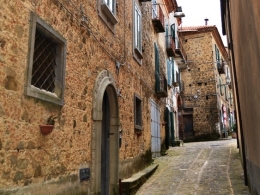Omignano
 Sito web: nd
Sito web: ndOmignano is a small town of around 450 inhabitant , set on the slopes of Mount Stella, the symbol of Ancient Cilento. Information about Omignano has been found in a document of 1047, when the Langobards had the control on this area. The town’s structure is the typical one of the medieval villages: alleyways, stone houses, arches at the corner of the streets.
From Serra and Casal Soprano neighborhoods there is a wonderful view of the Tyrrhenian sea and of Capo Palinuro.
The ancient church dedicated to Saint Nicholas dates back to the 16th century, whereas the De Feo Palace (once the residence of the Mazzacane Princes) was built up in the 17th century.
This place is rich in water and the Saints’ fountain, set at the town entry, beckons people even from the surroundings.
Citizens from Omignano have taken part in some important historical events such as the Parthenopean Revolution of 1799 and the Expedition of the Thousand led by Giuseppe Garibaldi.
This isolated area has granted the ancient dialect to survive. Gerhard Rohlf, German Philologist and Linguist, choose the dialect of Omignano as topic of his Cilento’s dialect study, in 1924.
In Omignano is produced excellent extra virgin olive oil and other foods of the Mediterranean Diet. Local cooking is famous for handmade “fusilli” pasta.
















